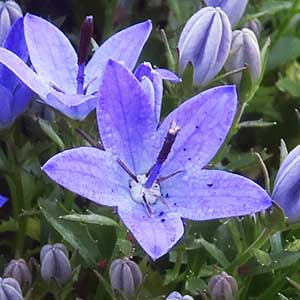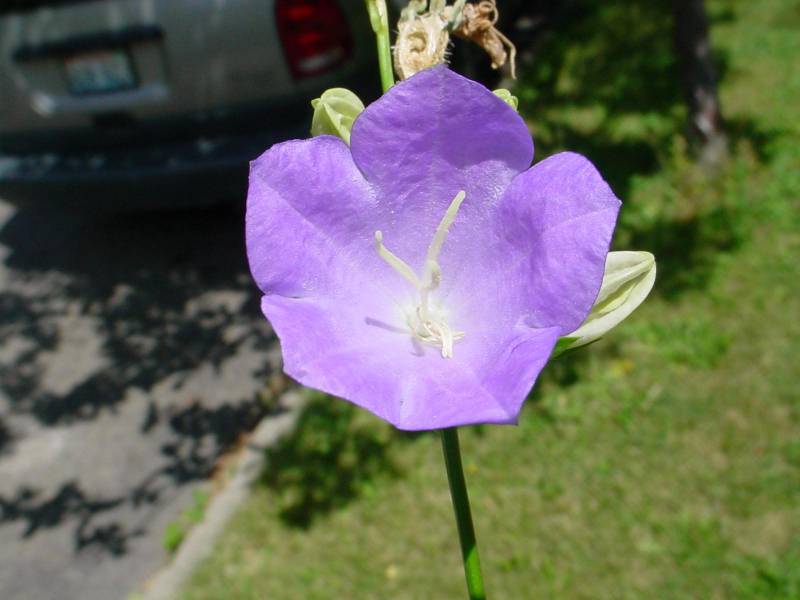Campanula piperi
Campanula persicifolia
Olympic bellflower
peach-leaf bellflower
Basal leaves oblanceolate, 1-3 cm. long and 1/3 as wide, sharply serrate with firm, slender teeth;
cauline leaves alternate, similar and nearly as large as the basal.
Lower leaves oblong, petiolate; upper leaves alternate, sessile, linear-lanceolate
Flowers 1-3 on the branch ends;
calyx lobes 5, leaf-like, narrow, 5-10 mm. long, with a few slender teeth;
corolla saucer-shaped, blue, 12-16 mm. long, the 5 broad lobes twice as long as the tube;
stamens 5;
style much shorter than the corolla;
ovary inferior.
Flowers several in an elongate raceme, on long, curved pedicels arising from the axils of small bracts;
calyx lobes 5, narrow;
corolla broadly bell-shaped, blue-violet, 30-40 mm. long, the 5 lobes broadly triangular;
stamens 5;
stigma 3-lobed;
ovary inferior.
Capsule 3-celled; sub-globose, 3-5 cm. long and wide.
Capsule 3-celled.
Campanula piperi
Campanula persicifolia
- Local floras:
BC,
OR,
WA
- Local Web sites:
Flora NW,
PNW Herbaria
WildflowerSearch
iNaturalist (observations)
USDA Plants Database
- LBJ Wildflower Center
- SEINet
- Plants of the World Online
- Encyclopedia of Life
- Wikipedia
- Google Image Search



